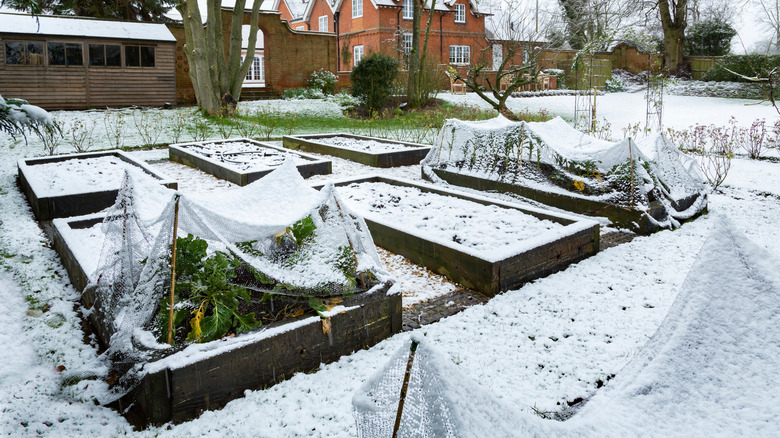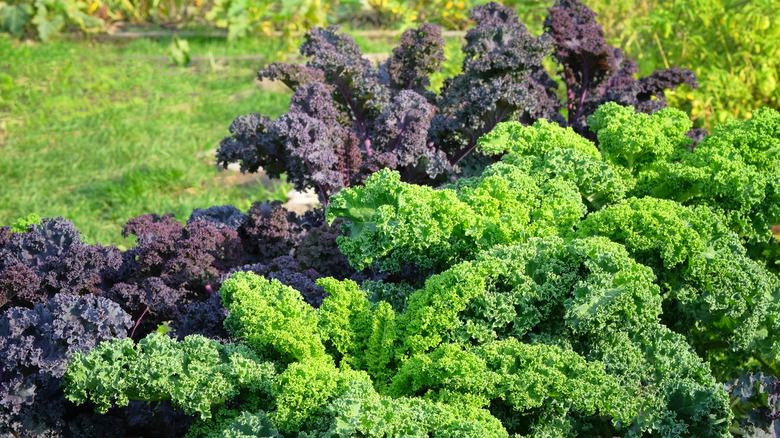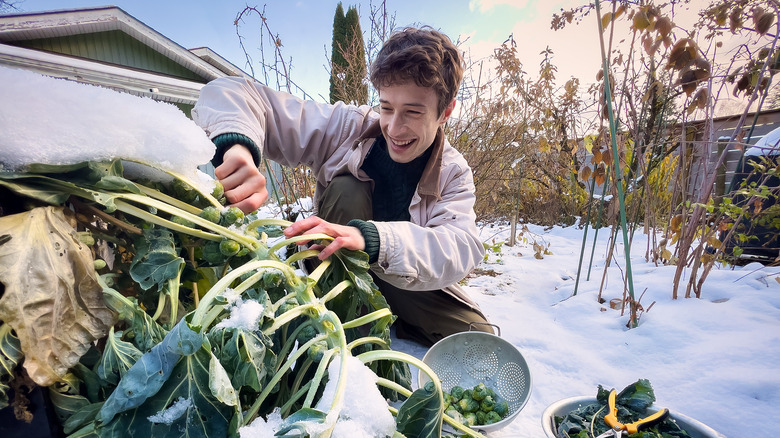Growing This Ornamental Veggie During Winter Comes With Some Major Benefits
For anyone living in a northern climate, when inside, winter can be a cozy time of year, but outside it can be beyond drab. Whether you delight or despair when snow piles up, there's no denying that gloomy gray skies for days if not weeks can be more than a downer. Even if snow is not usual in your area, gardens tend to fold in on themselves during the cold or rainy season. It doesn't matter if you're a homeowner who has a spacious backyard or a condo or apartment dweller with potted plants on the patio, those who rely on their gardens to alleviate dull days are in for a disappointment in winter when many plants can't bloom at all.
But several plants do thrive in the garden or on the porch or terrace, even during the cold season. These hardy plants offer a variety of benefits. One of the most popular ornamental plants is not only colorful but edible. Kale and ornamental cabbage will bring a welcome shot of color to the winter landscape. Usually purple, white, and green, this plant (Brassica oleracea) grows close to the ground, creating a beautiful patch of color in an otherwise monotone space.
Healthy and hardy
Kale has been recognized as a source of protein, calcium, and vitamins for hundreds of years. The best time to plant kale is during the autumn months when a touch of frost on a mature plant will bring a natural sweetness to the leaves, used in salads and smoothies, and also sauteed as a vegetable. Of course, you can grow kale in summer and fall, but unlike other edible plants, the hardiest varieties of kale will survive in temperatures down to -10F (-23C)! Frost actually sweetens the taste of kale as the cold converts the starches in the plant to sugars.
Much of the plant's growth depends on how much sunlight it receives. Kale prefers to grow in fertile, well-draining soil in full sun. Even well-established plants won't grow a lot of new leaves in the coldest, darkest winter days. But you can harvest the fresh, green leaves throughout the winter, and new growth will appear as temperatures climb and days lengthen. In the coldest parts of the country with the most severe winters you can protect kale using a cold frame, mini hoop, or greenhouse.
Four season gardening
The kale family also includes cabbage and collards, which will remain green in winter and are also edible. Redbor, a variety of kale with dark, curly leaves looks beautiful in a bed long after your lawn has turned brown. Red Russian kale is another good variety for overwintering. Not only do its leaves stay tender no matter what the temperature, but its medium-green leaves often have a streak of deep purple along the inside stem. Kale is among the easiest, least fussy plants to grow and we have suggestions for successful planting and harvesting.
Though kale has been cultivated for centuries, it's currently enjoying a bit of a renaissance. It belongs to a class of plants recently dubbed edimentals. The name is a mash-up of edible and ornamental and encompasses vegetables such as kale and rainbow chard, herbs, bushes like blueberry, and even flowers from nasturtiums to violets. These plants are not only delicious for humans, but they are food for pollinators and beautify the garden with texture and changing colors throughout all four seasons.


